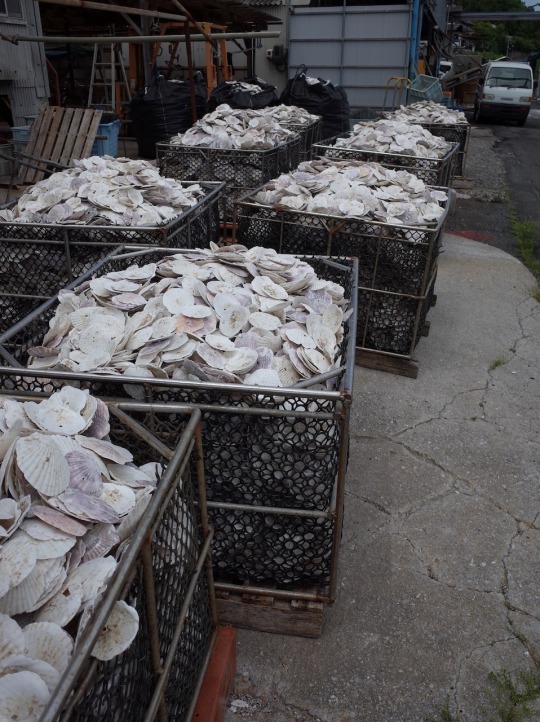#Oyster Farming
Explore tagged Tumblr posts
Text
"Discarded shells from restaurants and hotels are being used to restore damaged oyster ecosystems, promote biodiversity and lower pollution in the city’s bays...
Nestled in between the South China Sea and the Pearl River Delta, Hong Kong has been seen historically as an oyster hotspot. “They have been supporting our livelihood since ancient times,” says Anniqa Law Chung-kiu, a project manager at the Nature Conservancy (TNC) in Hong Kong. “Both oysters and their shells are treasures to humans.”
Over the past five decades, however, the city’s sprawling urban development, water pollution, as well as the over-harvesting and frequent seafloor dredging by the lime industry – which uses the crushed shells to make construction material – have destroyed Hong Kong’s oyster habitats and made the waters less hospitable for biodiversity.
The more oyster colonies falter, the worse the problem gets: oysters are filter feeders and purify water by gobbling up impurities. Just one Hong Kong oyster can filter up to 200 litres of water a day, more than any other known oyster species. But decades of rapid industrialisation have largely halted their water-purifying services.
The depletion of Hong Kong’s natural oyster reefs also affects the ability of local farmers to sustainably cultivate their oysters in a healthy environment, denting the reputation of the city’s 700-year oyster farming tradition, designated by Unesco as an “intangible cultural heritage”.
Inhabitants of the coast feel abandoned, says Ken Cheng Wai-kwan, the community leader of Ha Pak Nai on Hong Kong’s Deep Bay, facing the commercial city of Shenzhen in China. “This place is forgotten,” Cheng says. “Oysters have been rooted here for over 400 years. I ask the question: do we want to lose it, or not?”
A group of activists and scientists are taking up the challenge by collecting discarded oyster shells and recycling them to rebuild some of the reefs that have been destroyed and forgotten in the hope the oysters may make a comeback. They’ve selected locations around the island where data they’ve collected suggests ecosystems still have the potential to be rebooted, and there are still enough oyster larvae to recolonise and repopulate reefs. Ideally, this will have a positive effect on local biodiversity as a whole, and farming communities.
Farmers from Ha Pak Nai were among the first to hand over their discarded shells to the TNC team for recycling. Law’s team works with eight oyster farmers from Deep Bay to recycle up to 10 tonnes of shells every year [over 22,000 pounds]. They collect an average of 870kg every week [over 1,900 pounds] from 12 hotels, supermarkets, clubhouses and seafood restaurants in the city, including some of its most fashionable establishments. About 80 tonnes of shells [over 176,000 pounds] have been recycled since the project began in 2020.
Restaurants will soon be further incentivised to recycle the shells when Hong Kong introduces a new fee for waste removal – something that is routine in many countries, but only became law in Hong Kong in July and remains controversial...
Preliminary data shows some of the restored reefs have started to increase the levels of biodiversity, but more research is needed to determine to what extent they are contributing to the filtering of the water, says Law.
Scientists from the City University of Hong Kong are also looking to use oyster shells to increase biodiversity on the city’s concrete seawalls. They hope to provide tiny, wet shelter spots around the seawall in which organisms can find refuge during low tide.
“It’s a form of soft engineering, like a nature-based solution,” says Charlene Lai, a research assistant on the team."
-via The Guardian, December 22, 2023
#oyster#oyster farming#sea shells#seafood#hong kong#ecosystem restoration#biodiversity#ecosystem#water pollution#clean water#cultural heritage#marine life#marine animals#marine science#good news#hope
808 notes
·
View notes
Text
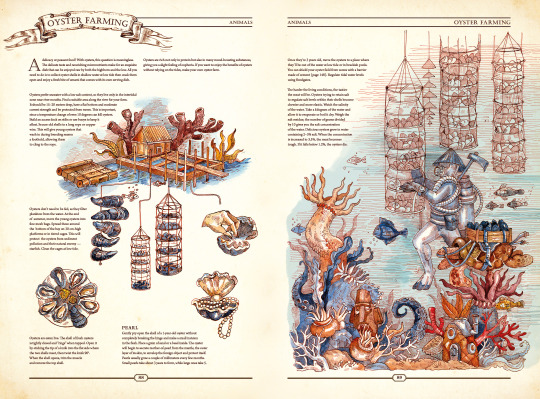
Guide To Oyster Farming --- Source: "The Book"
5 notes
·
View notes
Text
The global oyster farming market is Booming
The global oyster farming market is Booming, with a projected growth rate of 4.8% CAGR from 2024 to 2032. The market, valued at USD 4.62 billion in 2023, is driven by rising consumer demand for oysters due to their health benefits and sustainable farming practices. As eco-conscious consumers seek out environmentally friendly seafood options, oyster farming is positioned for continued success. The industry faces challenges such as climate change, disease, and market competition, but innovative farming practices and a focus on sustainability are paving the way for future growth.

Download Sample Report Click Here
1 note
·
View note
Text
What Financial Assistance Options Are Available For Oyster Farming?
The “Financial Assistance to Mussel Culture and Oyster Farming in Goa” scheme was introduced by the Department of Fisheries, Government of Goa. This govt scheme provides financial support to fishermen who are interested in setting up mussel and oyster farming units. Applications for this government scheme for oyster farming are accepted only in offline mode.
To set up a unit in estuarine waters, fishermen can get 50% of the cost covered, up to ₹25,000 per unit. They can have up to 2 units, with each unit being 4 metres by 4 metres in size. For units in the open sea, they can also receive 50% of the cost, up to ₹40,000 per unit. A maximum of 2 units is allowed, and each unit will be 6 metres by 6 metres in size.
Let’s take a look at how to apply for this government scheme.

0 notes
Text
Celebrating National Oyster Day: A Dive into the World of Oysters
Celebrate National Oyster Day by diving into the world of oysters! From their rich history and unique flavors to their ecological importance, discover why these briny bivalves are so beloved.
August 5th marks National Oyster Day, a celebration of one of the ocean’s most fascinating and delicious bivalves. Oysters have been enjoyed by humans for thousands of years, prized not only for their unique taste but also for their ecological importance and cultural significance. Whether you’re an oyster aficionado or just curious about these briny delicacies, National Oyster Day is the perfect…
#Culinary Delights#Marine Ecology#National Oyster Day#Oyster Farming#Oyster Recipes#Oyster Restoration#Oysters#seafood#Seafood Lovers#Sustainable Seafood
0 notes
Text




Silly gacha react ahh drawings (i just wanted to find an excuse to draw caviar staring at his dead version with shock)
Also loyster staring at the alternate version of the guy that killed him in said alternate reality
#crk#cookie run kingdom#cr kingdom#crk art#cookie run#candy diver cookie#the legend of the duskgloom sea#swapped au#captain caviar cookie#abalone cookie#loyster cookie#lord oyster cookie#bubblegum coral cookie#black barnacle cookie#captain ghostbalone cookie#ive decided to use au name tags so i dont flood the fuck out of the regular name tags because then i’ll feel like a content farm blog#anywayssss#I KEEP FORGETTING THE SWIRLY THING ON CANDY DIVERS HELMET NO WONDER THEY LOOKED SO BALD OMGGFF
11 notes
·
View notes
Text

Oyster farm in Arcachon, Gascony region of France
French vintage postcard
#postal#france#historic#french#ansichtskarte#oyster#sepia#vintage#tarjeta#gascony#farm#briefkaart#photo#arcachon#postkaart#ephemera#postcard#postkarte#photography#region#carte postale
11 notes
·
View notes
Text


#its alright chief im just bein emo.#vwatched a wvideo of someone wvisiting an oyster farm and i felt the glutton rise up.
3 notes
·
View notes
Text
I need oysters STAT
#while its not oyster season i live in an oyster area so theyre farmed year round :3c due to oyster breeding#sydney talking
8 notes
·
View notes
Text
"When Francois Beyers first pitched the concept of 3D ocean farming to the Welsh regulators, he had to sketch it on napkins.
Today the seafood farm is much more than a drawing, but if you walked along the Welsh coastal path near St David’s, all you’d see is a line of buoys. As Beyers puts it: “It’s what’s below that’s important.”
Thick tussles of lustrous seaweed suspend from the buoys, mussels cling to its furry connective ropes and dangling Chinese lantern-esque nets are filled with oysters and scallops.
“It’s like an underwater garden,” says Beyers, co-founder of the community-owned regenerative ocean farm, Câr-y-Môr. The 3-hectare site is part of a fledgling sector, one of 12 farms in the UK, which key players believe could boost ocean biodiversity, produce sustainable agricultural fertiliser and provide year-round employment in areas that have traditionally been dependent on tourism.
Created in 2020 by Beyers and six family members, including his father-in-law – an ex-shellfish farmer – the motivation is apparent in the name, which is Welsh for “for the love of the sea”. ...
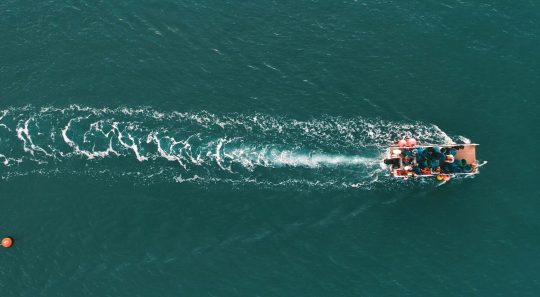
Pictured: Drone shot of Câr-y-Môr, which is on the site of abandoned mussel farms. Image: Scott Chalmers
Ocean farming comes from the technical term ‘integrated multi-trophic aquaculture’, which means a mixture of different seaweed and shellfish species growing together to mutually benefit each other. But it’s not just a way of growing food with little human input, it also creates ocean habitat.
“You’re creating a breeding ground for marine animals,” explains Beyers who adds that the site has seen more gannets diving, porpoises and seals – to name a few – since before the farm was established.
Ocean farms like Câr-y-Môr, notes Ross Brown – environmental research fellow at the University of Exeter – have substantial conservation benefits.
“Setting up a seaweed farm creates an exclusion zone so fishermen can’t trawl it,” explains Brown, who has been conducting experiments on the impacts of seaweed and shellfish farms across the UK.
Brown believes a thriving ocean farming industry could provide solutions to the UK’s fish stock, which is in “a deeply troubling state” according to a report that found half of the key populations to be overfished. “It would create stepping stones where we have safe havens for fish and other organisms,” he adds.
But UK regulators have adopted a cautious approach, note Brown and Beyers, making it difficult for businesses like Câr-y-Môr to obtain licenses. “It’s been a tough old slog,” says Beyers, whose aim is to change the legislation to make it easier for others to start ocean farms.
Despite navigating uncharted territories, the business now has 14 full-time employees, and 300 community members, of which nearly 100 have invested in the community-benefit society. For member and funding manager Tracey Gilbert-Falconer, the model brings expertise but most importantly, buy-in from the tight-knit local community.
“You need to work with the community than forcing yourself in,” she observes.
And Câr-y-Môr is poised to double its workforce in 2024 thanks to a Defra grant of £1.1 million to promote and develop the Welsh seafood industry as part of the UK Seafood Fund Infrastructure Scheme. This will go towards building a processing hub, set to be operational in April, to produce agricultural fertiliser from seaweed.
Full of mineral nutrients and phosphorous from the ocean, seaweed use in farming is nothing new, as Gilbert-Falconer notes: “Farmers in Pembrokeshire talk about their grandad going down to the sea and throwing [seaweed] on their farms.”
But as the war in Ukraine has caused the price of chemical fertiliser to soar, and the sector tries to reduce its environmental impact – of which synthetic fertiliser contributes 5% of total UK emissions – farmers and government are increasingly looking to seaweed.
The new hub will have capacity to make 65,000 litres of sustainable fertiliser annually with the potential to cover 13,000 acres of farmland.
But to feed the processing hub, generate profit and reduce their dependency on grants, the co-op needs to increase the ocean farm size from three to 13 hectares. If they obtain licences, Beyers says they should break even in 18 months.
For now, Beyers reflects on a “humbling” three years but revels in the potential uses of seaweed, from construction material to clothing.
“I haven’t seen the limit yet,” he smiles."
-via Positive.News, February 19, 2024
#wales#welsh#ocean#marine biology#aquaculture#marine life#marine animals#seaweed#sea scallops#oysters#united kingdom#uk#conservation#conservation news#overfishing#environmental news#farming#sustainable agriculture#sustainability#ocean farming#good news#hope
490 notes
·
View notes
Text
First mushroom flush from the skill share event we hosted in May. Golden oysters!! Looks like they appreciated the recent heat wave.

It was so much fun bringing these to Khonsu and seeing his joy and excitement today. 💛

Mushrooms are a key food source we are cultivating here at Ezili's Respite. Looking forward to sharing the abundance!

4 notes
·
View notes
Text

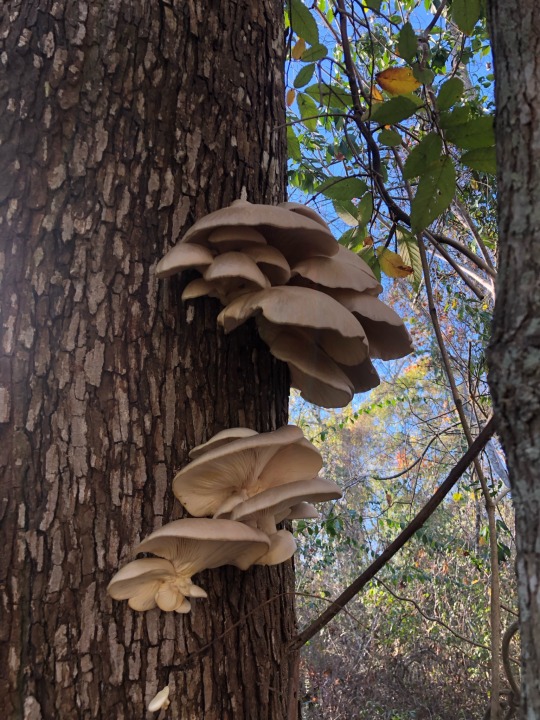
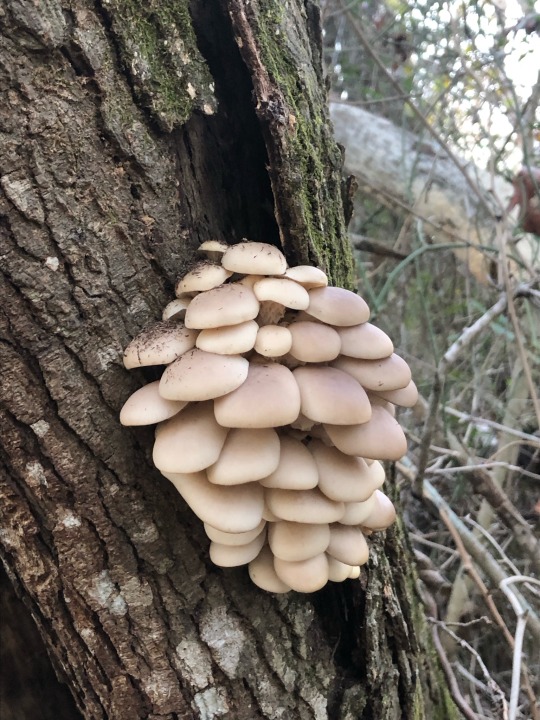
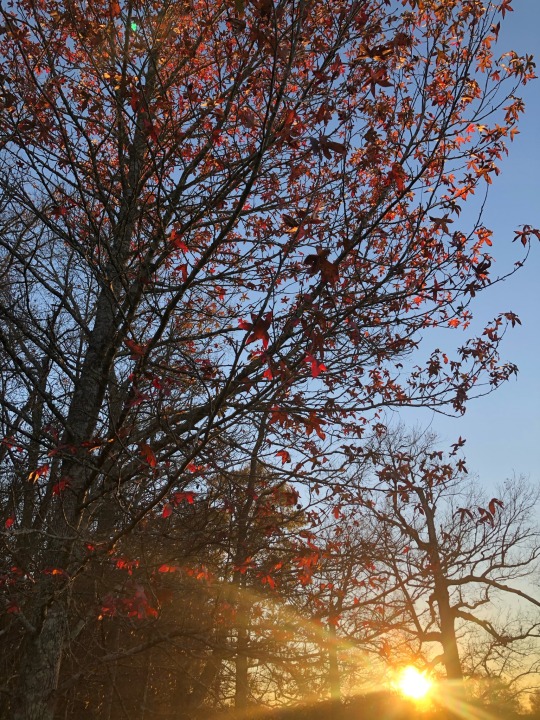
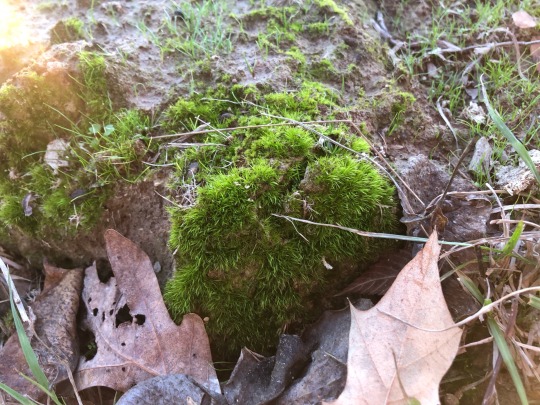
🌿🍄🌞🍂☮️
#lions mane#oyster mushroom#flowerchild#moss garden#farm life#nature#shrooms#flowerpower#nature walk#nature vibes#peace#meditation
7 notes
·
View notes
Text
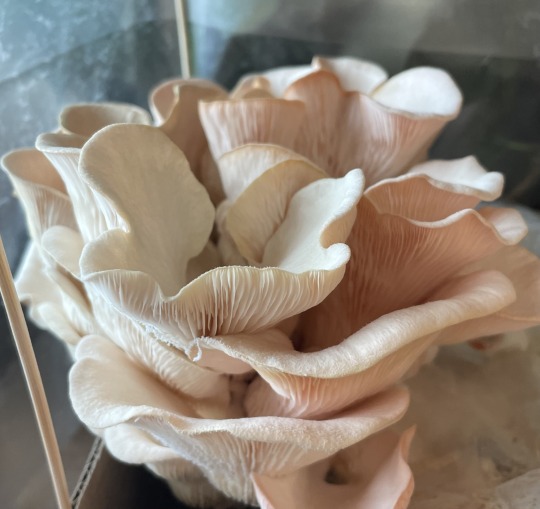
#mycology#pink oyster mushroom#Pleurotus#second flush on a kit from a local farm#I wish i had a trumpet oyster kit lol
2 notes
·
View notes
Text



Meet the photographer
Flaherty's Family Farm, ME
#zengardenphotos#zengardenarthouse#photography#photographers on tumblr#original photography#Flaherty’s Family Farm#apples#fresh produce#produce#groceries#oysters#fresh oysters#lobster#fresh lobster#live lobsters#seafood#vintage#nostalgia#fall#autumn#East Coast#Scarborough#Maine#New England
1 note
·
View note
Text
My first attempt at growing some grey oyster mushrooms.
0 notes
